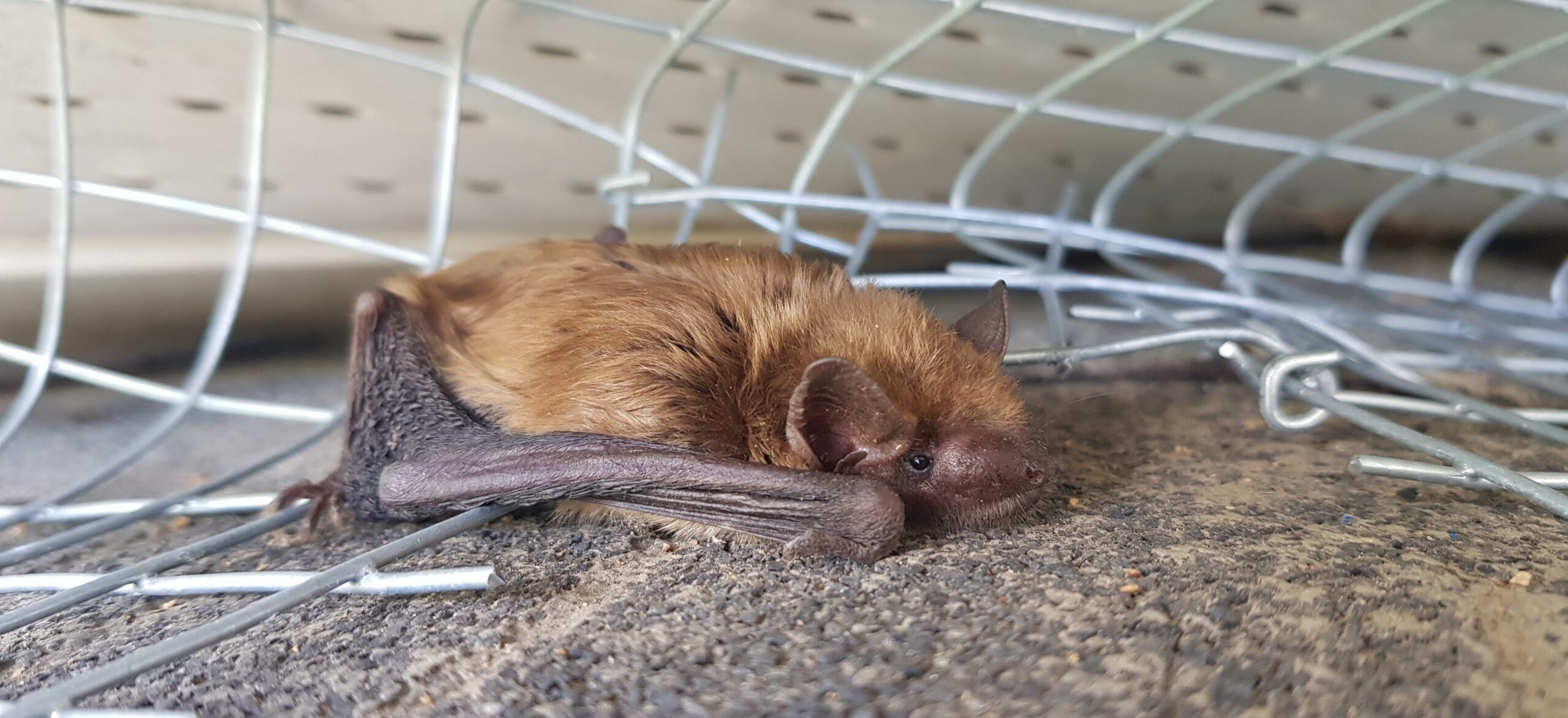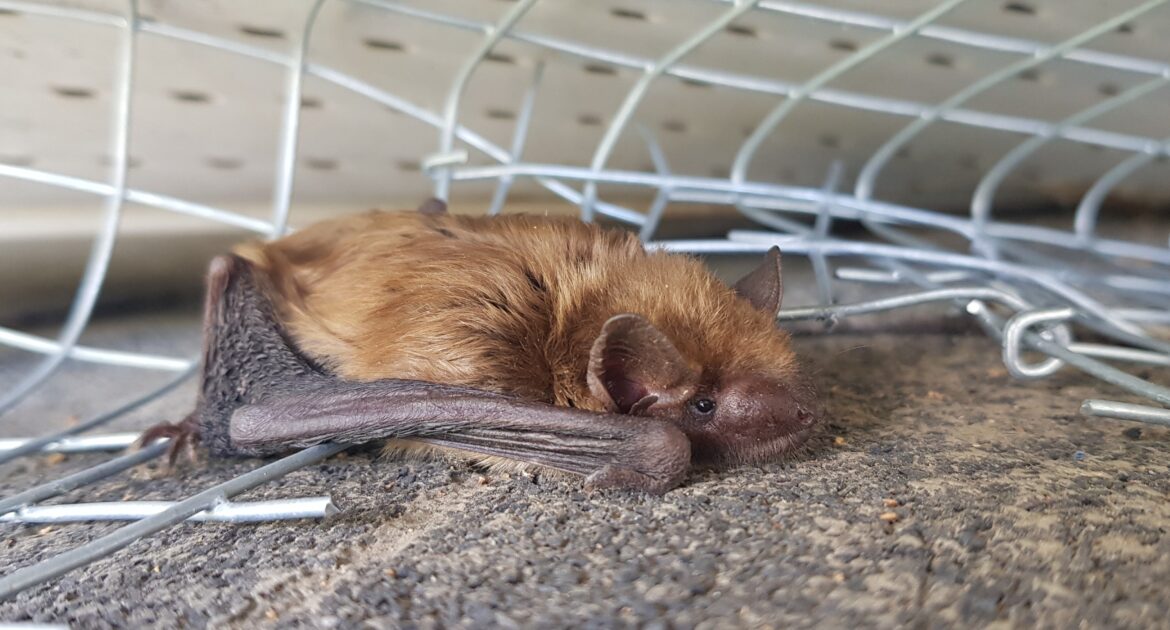When the sun sets over Parliament Hill, many residents are unaware of the nocturnal activity happening in their neighbourhoods. Bats in Ottawa are more common than most people think, silently providing essential ecological services while we sleep. As wildlife specialists serving the community, we often find homeowners surprised to discover these winged mammals nesting in their attics, walls, or eaves.
Understanding the bat population in your neighbourhood is crucial for property protection. Let’s take a look at the fascinating world of these creatures in our capital city and explore what their presence means for your home and community.
Are Bats Common in Ottawa Neighbourhoods? Understanding Local Populations
Yes, bats are indeed common in Ottawa, with several species calling our city home. The most frequently encountered species include:
- Little Brown Bats
- Big Brown Bats
- Northern Long-eared Bats
- Eastern Red Bats
Although exact population numbers are challenging to pinpoint due to their nocturnal and elusive nature, research indicates that thousands inhabit urban and suburban areas. These populations fluctuate seasonally, with numbers increasing during summer months and decreasing during winter hibernation periods.
Population Distribution: Bats are not evenly distributed throughout the city. They concentrate in areas offering both shelter and feeding opportunities, such as older neighbourhoods with mature trees like Rockcliffe Park and Old Ottawa South, areas near water bodies like the Rideau Canal and Ottawa River, and parks and green spaces such as Gatineau Park and the Greenbelt.
Unfortunately, Ottawa’s bat population has faced significant challenges in recent decades due to habitat loss, pesticide use, and diseases like White-Nose Syndrome. This fungal infection has devastated bat colonies across North America, making the protection of remaining populations even more crucial.
The Ecological Benefits of Ottawa’s Bat Population
Bats play a surprisingly important role in the city’s urban ecosystem, offering services that benefit both our environment and economy.
Natural Pest Control Champions
One of the most significant benefits of having bats in a neighbourhood is their incredible appetite for insects. Consider this:
- A single bat can consume up to 1,000 mosquitoes and other insects in just one hour.
- A small colony can devour millions of insects over a summer season.
- By controlling agricultural and garden pests, bats help reduce the need for chemical pesticides.
For residents who enjoy summer evenings on patios and decks, these creatures are silent allies in making outdoor spaces more comfortable by reducing mosquito populations. This natural service not only enhances our outdoor activities but also helps limit the spread of mosquito-borne diseases.
Supporting Local Biodiversity
Beyond pest control, bats contribute to environmental health in several ways. Though less common in local species, some bats assist in spreading seeds of various plants. As predators of night-flying insects, bats help maintain balanced ecosystems. Moreover, the overall health of local bat populations serves as an indicator of environmental quality.
Signs of Bats in Your Neighbourhood
How can you tell if bats are active in your area? The most common indicators include:
Visual Indicators
- Bats emerging from buildings at dusk, typically between May and September
- Small, black droppings (guano) accumulating near structures
- Staining around small openings in soffits, attics, or roof edges
- Chittering or squeaking sounds from attics or walls, especially at dawn or dusk
Seasonal Activity: Ottawa’s bat population is most visible during the summer months, with both adults and their young feeding actively by August—an ideal time to observe their activity.
How Bats Enter Homes
Understanding how bats access buildings is essential for prevention and humane management. Contrary to popular belief, they rarely enter through open doors or windows. Instead, they exploit small structural gaps, such as:
- Gaps as small as 6mm in roof lines
- Deteriorated soffits and fascia boards
- Uncapped chimneys
- Vents lacking proper screens
- Gaps around pipes and utility lines
Homeowners often realize they’re sharing space with these mammals only when a bat accidentally enters the living area, typically via gaps near light fixtures or vents.
Legal Protections for Bats Yes, bats are common in the area—and they’re also protected by law.
Federal and Provincial Protections
- All bat species in Ontario are protected under the Fish and Wildlife Conservation Act.
- Some species, like the Little Brown Bat, are listed under the federal Species at Risk Act.
- It’s illegal to deliberately harm or kill bats.
- Removal timing restrictions protect maternal colonies and their young.
Removal Timing: These legal protections mean that bat colonies cannot be removed during the maternity season (typically June through July) when females are nursing young. Attempting removal during this period can orphan baby bats, which is both inhumane and illegal.
Coexisting Safely with Bats in Your Neighbourhoods
Despite misconceptions, peaceful coexistence with bats is both possible and beneficial. Here are strategies for local residents to safely share their neighbourhoods with bats:
Creating Bat-Friendly Outdoor Spaces
Gardens with native plants attract insects that sustain bats, keeping them well-fed outside your home. Small water features can provide drinking opportunities, aiding their hydration without seeking access to your home. Installing bat houses on your property can offer alternative roosting sites, reducing the likelihood of bats entering structures.
Preventing Home Entry
The best approach to managing bats in local neighbourhoods is prevention:
- Regular Inspections: Check your roofline, soffits, and vents seasonally for small gaps.
- Preventative Sealing: Seal potential entry points before bats establish a colony.
- Proper Timing: Complete exclusion work in fall after young are flying but before hibernation.
- Professional Assessment: Have professionals evaluate your property for entry points.
When Professional Help is Needed
While prevention strategies are effective for properties without established colonies, homes already housing bats require professional intervention. Skedaddle Humane Wildlife Control understands the unique challenges of bat removal in Ottawa and offers a proven process:
Professional Bat Management Process
- Thorough Inspection: Our technicians conduct comprehensive 35-50 point property inspections to identify all entry points.
- Colony Assessment: We evaluate colony size and stage, ensuring our plan aligns with breeding cycles.
- Humane Exclusion: Using one-way doors, we allow bats to exit naturally without harm.
- Complete Sealing: We seal potential entry points with wildlife-specific materials designed for your local climate.
- Cleanup and Sanitization: When necessary, we remove bat droppings and contaminated insulation to eliminate health risks.
Health Considerations with Bat Populations
While bats provide ecological benefits, they can present health risks when roosting in homes. One key concern is guano accumulation in attics and wall voids, which can harbour the fungus Histoplasma capsulatum, posing risks of histoplasmosis.
Understanding the interconnected role of bats within our ecosystems emphasizes the necessity of protective measures. By engaging with Skedaddle, you not only foster safer living environments for all but also contribute to the conservation efforts essential in sustaining these vital creatures. If bats are causing concerns in your property, reach out to Skedaddle for professional, eco-friendly solutions that balance coexistence with safety for you and your nocturnal neighbours.




